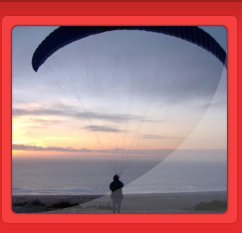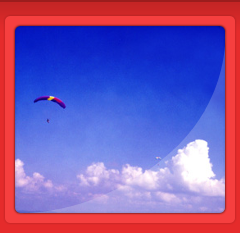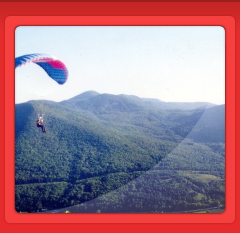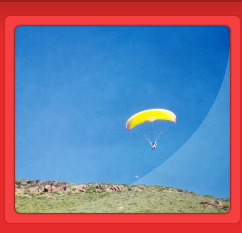| |
BEGINNING LESSONS
-
Beginning
lessons start with an hour of video tape instruction on how and
why the paraglider flies. During the video, the instructor
engages the student in a discussion of basic aerodynamics and
meteorology to assure an adequate understanding of the
paraglider before the student takes the glider out of the bag.
-
Next, the student learns
how to "inflate" the paraglider and control it. This can be done
on flat ground or on a very gentle slope.
-
At Cobble Hill, students
run down a gentle grassy slope while they demonstrate control of
the glider, turning it right or left toward a set of concentric
circles mowed into the grass (target landing zone). As the
student demonstrates proper control of the glider, he/she slowly
moves up the slope until ground skimming flights only five to
ten feet above the ground are achieved.
-
Once the student has
demonstrated mastery of these ground skimming flights, he/she is
ready to move up to a 75 foot launch site.
-
We like to see three good
flights from the 75 foot launch next. Once this is
accomplished, the student is ready to move up to a 150 foot
launch. From the 150 foot launch, the student learns to turn the
glider (45°and 90° turns first, and then 180° turns). Once the
student can do a 180° turn, he/she is ready to progress to the
top of the hill, 300 feet above the landing zone.
-
Students will be invited
to go higher on the hill by the instructor only after they have
demonstrated appropriate skills at the lower levels. Weather
conditions must be appropriate to permit this advancement. The
student makes the ultimate decision to advance to a higher
level, remain at the current launch site, or terminate the
lesson.
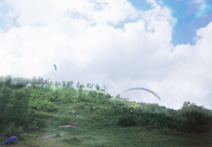
DURATION AND NUMBER OF
FLIGHTS DURING LESSONS
-
Flights from the 75 foot
launch are usually 15 to 20 seconds in duration.
-
Flights from the 150 foot
level are usually 20 to 40. seconds.
-
Flights from the 300 foot
launch are usually one to two minutes in duration, although
longer "soaring" flights are possible from the top for more
experienced pilots under appropriate conditions.
Most students get three to ten
flights in during a lesson from 8 to 11:30 am or 3:30 pm until dusk.
One of our students got 15 flights in during one lesson. The number
of flights achieved depends upon the progress of the student,
weather conditions and the student's stamina (ability to hike back
up the hill between flights without becoming overly fatigued). About
half of our students get all the way to the top of the hill during
their first lesson.
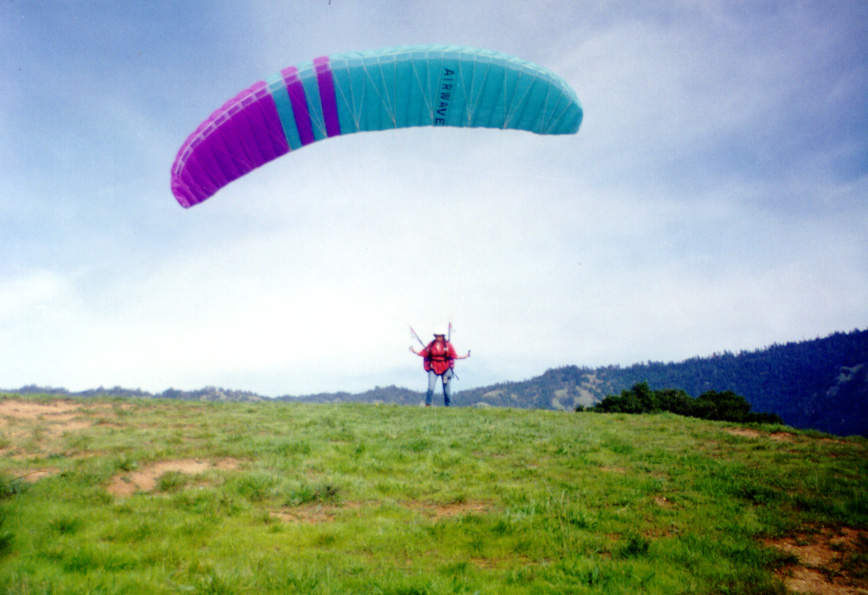
SUBSEQUENT LESSONS
-
In subsequent lessons, the
student practices launches, landing approaches and spot landings
in varying wind conditions until he or she is able to
demonstrate precise flying skills in conditions from no wind to
soarable (15 mph winds).
-
Basic maneuvers such as
"big ears", rear riser control and air speed recognition are
practiced.
-
Cross wind launches,
soaring skills, side hill landings and a host of other
paragliding skills are practiced until the pilot is ready to
take a written exam to get a Para 2 (solo) rating.
RATINGS
-
The Para 1 (student)
rating is achieved by most students on their first day of
lessons. The Para 1 rating requires a considerable knowledge
about the paraglider, how and why it flies, and two successful
launches and flights with landings under control into the wind
with a written exam. Para 1 students must be under supervised
instruction until they achieve their Para 2 rating.
-
The Para 2 (solo) rating
requires a minimum of five days of flying, 25 flights in
different wind conditions, 5 spot landings, successful
completion of basic maneuvers, and a written exam. Para 2 rated
pilots are ready to fly paragliders without instructor
supervision. Most pilots buy their own equipment upon achieving
of their Para 2 rating.
|
|
|
